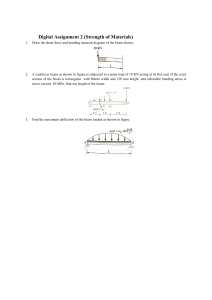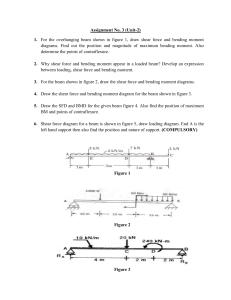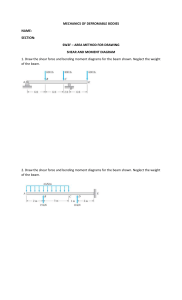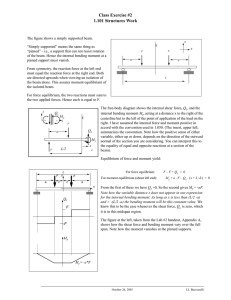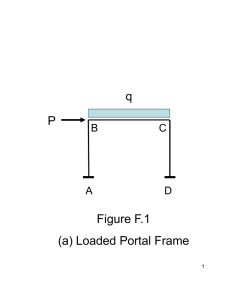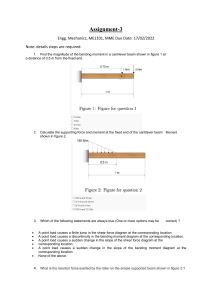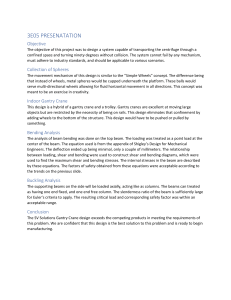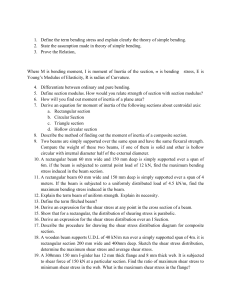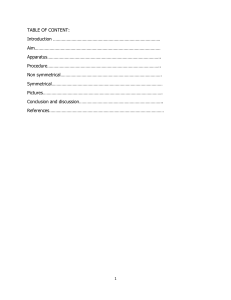+, @ fly -Mechanics of Solids
advertisement
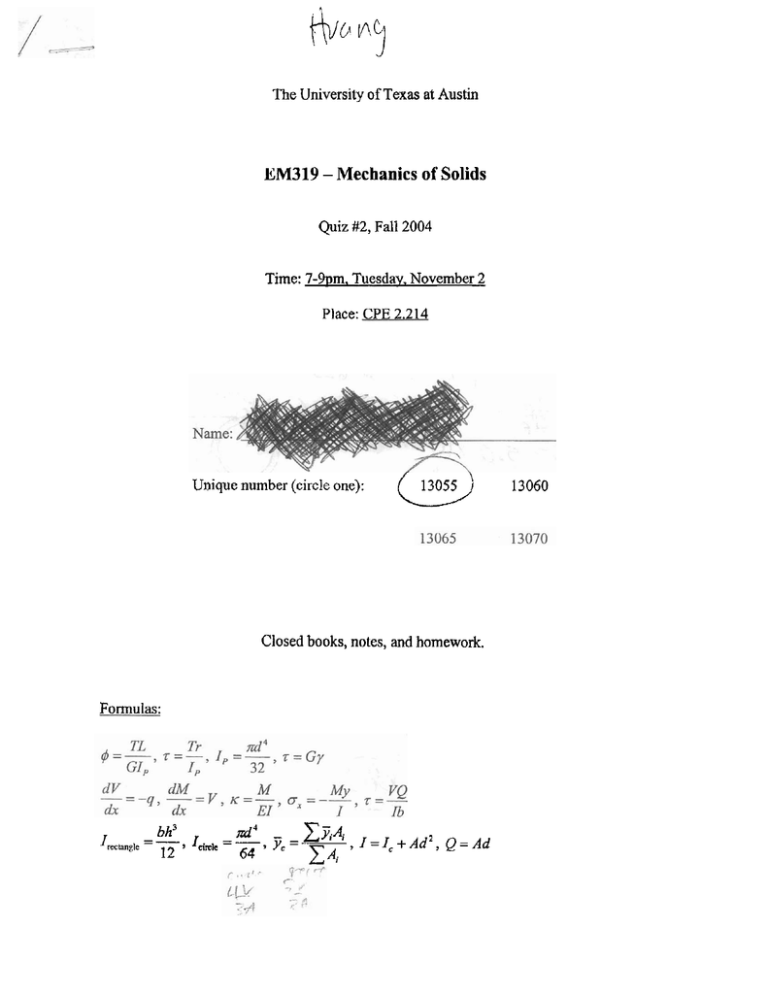
+, fly The University of Texas at Austin EM319 -Mechanics of Solids Quiz #2, Fall 2004 Time: 7-%m. Tuesday, November 2 Place: CPE 2.214 Unique number (circle one): @ Closed books, notes, and homework. Formulas: 'rectangle - bh3 -, 12 I. "'I 6 4 , Y-, = =~. =-d4 Y ; A ;I = I c + A d 2 , Q = A d 13060 i [ ;b\ f 1. A circular bar AB with ends fixed against rotation has a hole extending for half of its length (see figure below). The diameter of the bar is 100 mm, and the diameter of the hole is 80 mm. The total length of the bar is 1250 mm. A torque Toa ~ - is m applied at a distance x £rom the leR end of the bar. For x = 625 mm, determine the following: 2. The beam ABCD shown below in the figure has overhangs at both ends and canies a uniform load of intensity q. &9 30 7 (a) Find the reaction forces at the supports B and C. (10) (b) Draw the shear-force diagram of the beam; Find the maximum shear force. (10) (c) Draw the bending moment diagram of the beam; Find the maximum bending moment. (10) 3. The cross section of a beam is shown below. The coordinate system is set up so that the y-axis is the axis of symmetry and the z-axis passes through the centroid of the cross section. The numbers are: a = 4 in, b = 5 in, h = 10 in, and t = 1 in. (a) Determine the location of the z-axis, that is, to find 7,. (10) (b) Calculate the moment of inertia of the cross section with respect to the z-axis, I* . (10) (c) Calculate the maximum tensile and compressive stresses in the cross section when the beam is subjected to a positive bending moment M = 100 ib-in. (10) (d) . . Calculate the maximum shear stress in the cross section when the total shear force acting on the cross section ' .',' 9 1/ 4 Zb -- Q25;- r\ P b 5;n --c?, r;;: 4 4 -r , - (.; -,. /m ~ l o ~ 5,g2b> l ( -1 / f,.! G;7 "I I ii - ,... . ' s -m\ ,. / ._ )A - QZ ~ T ) c s , L(~ T,=7?J~\ ) :'' -----' , rJJ pL 7-



